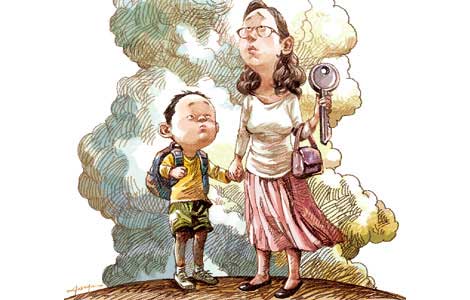LatAm, Africa most exposed to China slower growth
Updated: 2013-07-10 21:53
(Xinhua)
|
||||||||
LONDON - Latin America and some parts of Africa are most exposed to China's shifts to a slower but more sustainable model of consumption-led growth, Capital Economics, a London-based economic analysis company, said Wednesday.
"We think Beijing is serious about getting to grips with the structural problems at the heart of China's economy. The result is likely to be a period of weaker growth. We expect GDP to grow by 7 percent in 2014 and by just 6.5 percent in 2015," said Capital Economics in a report.
"Moreover, in addition to the weaker overall pace of growth, the drivers of China's economy are likely to shift. Investment, which now accounts for nearly half of GDP, will cool. Meanwhile, household consumption is likely to become more important."
While this kind of change is likely to take place over several years, it will have significant implications for the rest of the emerging world. The biggest losers from China's rebalancing are likely to be the major commodity-producing emerging markets, most of which lie in Latin America, the Middle East and parts of Africa, it added.
Local factors are expected to determine the extent to which commodity-producing EMs suffer as a result of weakness in China. Those economies that have saved their commodity windfall, for example which run current account surpluses, look less vulnerable.
"It is worth noting that manufacturing-based EMs with strong ties to China, most of which are in Asia, are less vulnerable to Chinese rebalancing," the report said.
"The development of a domestic consumer market in China may mean that the rest of Asia benefits from rebalancing, even if the overall pace of GDP growth in China slows."

 Safety fears after iPhone 4 explodes
Safety fears after iPhone 4 explodes
 China donates wax figure of Kim Jong-il to DPRK
China donates wax figure of Kim Jong-il to DPRK
 Top 10 places for camping in China
Top 10 places for camping in China
 Thousands pay final tribute to US firemen
Thousands pay final tribute to US firemen
 Dozens feared dead in Quebec derailment
Dozens feared dead in Quebec derailment
 Breathe deep, this is the real thing
Breathe deep, this is the real thing
 Families of crash victims in SF
Families of crash victims in SF
 Rainstorms cause severe flooding and landslides
Rainstorms cause severe flooding and landslides
Most Viewed
Editor's Picks

|

|

|

|

|

|
Today's Top News
China issues timetable for govt info disclosure
ROK, DPRK end morning session amid differences
Boston bomber to make first court appearance
Pilots in air crash relied on automatic equipment
Chinese companies could face US delisting
High-level China-US talks to kick off
Watchdog: Trans-fat levels meet standards
IMF cuts China's, world's growth
US Weekly

|

|








